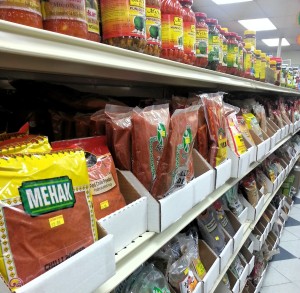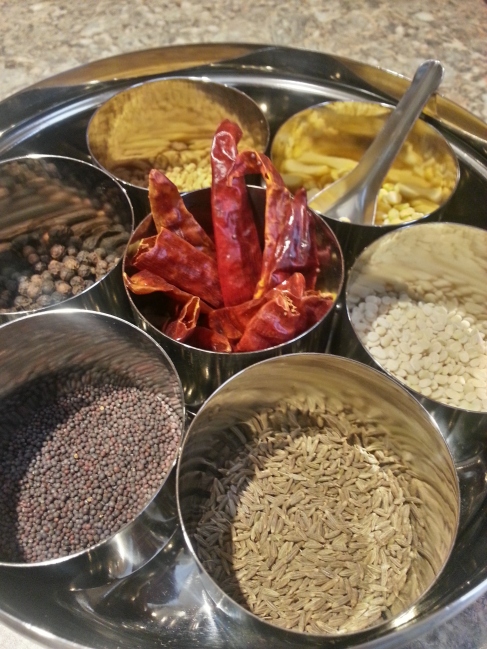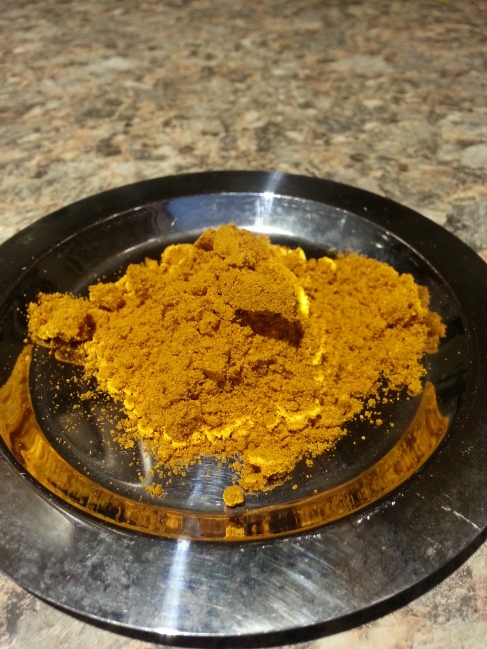
My adventure with Indian cooking began many years ago when my husband and I had our first apartment together. His father is Indian and his mother is Irish. He didn't eat a lot of Indian food growing up but remembers his father cooking it all the time. My Mother-in_Law was instrumental in compiling these recipes. She sat next to my Aunties and hand by hand measured the spices put in to each recipe. I owe her everything that is in the recipes I share with you. My husband has travelled to India numerous times and now I can also say I have a number of trips under my belt as well.
I have always been intrigued by the flavors on Indian food. I remember as a child, one of my best friend's family was from India. It was always a real treat to go over to her house and see all the beautiful things they had collected through the years. But my favorite was when they served Indian food. She was always embarrassed, but I ate it up, quite literally!
As I began to learn to cook as a young adult, my husband introduced me to Sambar and Rice. I never knew Indian food could be so light but rich, spicy, and......healthy? Gone were the cream sauces and heavy meat dishes of my youthful forays into Indian food. This was full of vegetables and healing spices such as fenugreek, cumin, and turmeric. I was mystified the first time I stuck my nose in a baggie of homemade sambar masala, flown straight across continents in my husbands suitcase carefully snuggled deep in the yards of my first sari. I was transfixed the first time I successfully popped black mustard seeds in hot ghee, the crackling bright aroma filling my kitchen. This was the Indian food I was meant to eat.
Please don't get me wrong, North Indian food is fabulous but I have had a love affair with South Indian for so many years now that it seems traitorous to eat anything but. I want to give you a few simple tools for stocking an Indian pantry and making a couple basic recipes. I have learned a lot from my family recipes but my favorite cook book of all time is Dakshin: Vegetarian Cuisine from South India. This book hosts many delicious and authentic recipes that are quite easy to make once you have a few items on hand. I am going to start out by giving you a list of spices you should keep on hand.
The Spice Box

This is a traditional spice box that you can find in almost any Indian kitchen. I bought mine in India but they are available online or in a well stocked Indian market. It's absolutely not necessary to have one but it sure makes cooking a lot more fun! This box holds the staple spices you will need for most South Indian dishes.
Starting from the bottom right and moving left (5:00)
- Cumin Seed
- Small Mustard Seed; look for the ones labeled "Andhra Mustard Seed", large will work too
- Black Peppercorns
- Fenugreek
- Channa Dal; Bengal Gram or Yellow Split Peas
- Urad Dal; Black Gram
- Dried Red Chillis
- Asafoetida or Hing
- Coriander Seeds
- Turmeric Powder
- Toor Dal; Red Gram or Pidgeon Peas
- Tamarind Pulp
- Kari or Curry Leaves
- Ghee or Clarified Butter
- Gingelly Oil, Indian Sesame Oil
- Any light oil with a high smoke point
Sambar Masala

- 3 Cups Coriander Seed
- ¼ Cup Channa Dal
- 1 Tbsp. Black Peppercorns
- ½ Tbsp. Fenugreek
- ½ Tbsp. Black Mustard Seed
- 1 Tbsp. Turmeric
- ¾ Cup Chilli Powder (dried red chillis ground to a powder)
Now that your pantry is stocked with all sorts of wonderful spices and you've made your beautiful Sambar Masala, let's get to the stuff you're here for!
South Indian Meal: Recipes
Craving your indian food at 7:45 in the morning! Can't wait to make the spice mix.
ReplyDelete